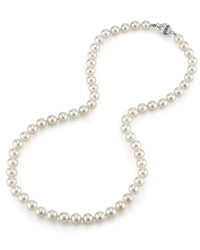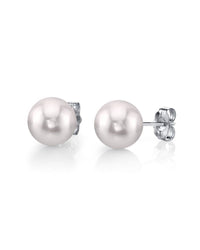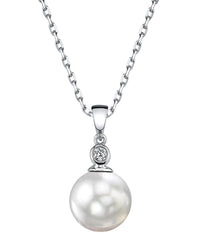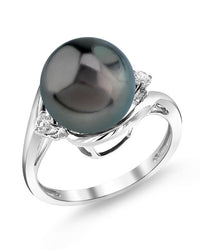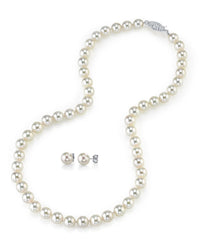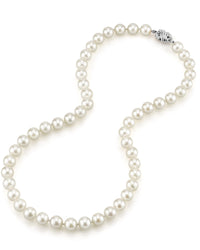Pearls on Last: make sure that your pearl jewelry is the last part of your outfit you put on. This is after all cosmetics, perfumes, hairspray, etc., and then the pearls can be added. This gives the pearls a chance to avoid being exposed to any chemicals and possibly discoloring over time.
After Care: after you’re done wearing your pearls for the day, it’s a good practice to wipe them down with a soft, slightly damp cloth. This helps remove any residues like sweat, oil or other chemicals they may have picked up from the day.
Storing Necklaces: it’s best to lay your necklaces down flat in your jewelry box rather than hang them on a hook when you’re done wearing them, as this stops the silk knotting from stretching out in between each pearl. Pearls should be stored away from other jewelry with sharp metal components to prevent surface scratches.
Restring Your Pearls: another great way to keep your pearl necklaces and bracelets looking their best is to get them professionally restrung once a year to once every two – three years or so, depending on often you wear them. Restringing your pearls keeps the knots fresh, tight and non-frayed.
Avoid Swimming and Showers: while pearls were born in the water, modern additives like chlorine is really not ideal for pearls. In addition to possibly discoloring the pearls due to repeated, long-term exposure, the chemicals in the water also eat holes in the adhesives used to secure pearl pendants, earrings and rings to their mountings. Remove your pearl ring and set it in a safe place before washing your hands or doing the dishes as well.
Avoid Harsh Chemical Exposure: other chemicals can also harm your delicate pearls … avoid exposure to hydrogen peroxide, chemical bleaches and other dyes.
Avoid Ultrasonic Cleaners: Never clean your pearls in an ultrasonic cleaner as that can permanently damage your pearls.
Avoid Storage Deposit Boxes or Airtight Containers: Pearls require moisture in order to retain their beauty and structural integrity, so airtight environments are deadly to pearls. There have been stories of pearls left in bank deposit boxes for safekeeping, only to open the box twenty years down the line to find pearl dust.
Wear Your Pearls: Like we said, pearls love moisture and will benefit from absorbing the oils in your skin, which will help moisturize the nacre layers and aragonite (think organic glue) holding the layers together, keeping everything nice and lustrous.
